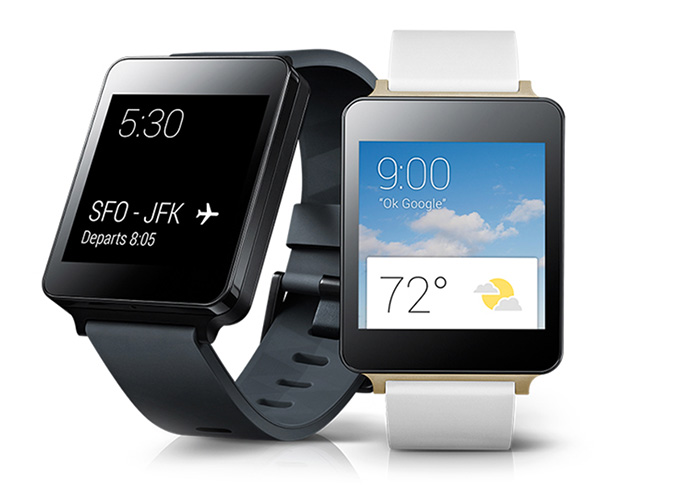LG Issues G Watch Update to Fix Issues With Corrosion
by Brandon Chester on August 2, 2014 12:50 PM EST
LG's G Watch is one of the first devices to run Android Wear. Like many first generation tech products, early adopters are usually subject to problems due to design oversights and immature software. With the G Watch there have been reports from users that they are experiencing a little bit of both with an issue relating to corrosion of the watch's charging pins. The issue seems to occur primarily after long periods of exercise where the user has been sweating. This is because sweat contains salt, an electrolyte which dissolves and forms ions which allows the liquid sweat to better conduct electricity. This sweat forming around the contact pins causes corrosion in a chemical reaction where an oxide coating is formed.
It may be strange to think that a software update could fix an issue with metal corrosion on a device, but the issue occurs due to the current flow from the charging pins while surrounded by sweat. It is being reported that LG is issuing an OTA updating the watch from build number KMV78V to KMV78Y to fix the issue by disabling the current to the charging pins when the watch is not in the charging dock. A Google representative has confirmed with Android Police that this is the case and that the update began rolling out yesterday. Hopefully this update fixes the issues and saves LG from dealing with a plethora of warranty claims, and G Watch users from having to make them. The update should also address complaints from some users about discomfort and irritation of the skin underneath the charging pins on their wrists.
Source: Android Police










8 Comments
View All Comments
londedoganet - Saturday, August 2, 2014 - link
It may be strange that a software update can be used to address a physical problem, but I find it even stranger that the charging pins were still supplied with a voltage even when they're not connected (and thus capable of supplying current when a conductive path is presented in the form of salt water bridging the pins). I seem to remember being told in my sophomore year of electrical engineering that is wasn't ever a good idea to be leaving pins floating at indeterminate voltage levels.extide - Saturday, August 2, 2014 - link
They're NOT floating, that's why there is possibly some current, and apparently they arent shorted to the same place. Making them float, should fix the issue.londedoganet - Sunday, August 3, 2014 - link
Hm, I think I've mixed up my terminology; what I mean was that the pins were left at indeterminate voltage levels, such that a potential difference could possibly exist between two or more pins. This probably isn't "floating" in the commonly-accepted sense of the word, but the actual term escapes me.But yes, if it is possible to set the pins to a high-impedance state, that should fix the problem.
teddyboyd - Tuesday, December 9, 2014 - link
I recommend going for some of the top smartwaatches, it's worth the money. ted/ from http://www.topreport.org/wearable/Impulses - Sunday, August 3, 2014 - link
It's not the first time a software patch can fix a seemingly hardware issue, was it a Nexus phone that had a debouncing issue with sensitive volume buttons and a tweak to how they're polled fixed it?Impulses - Sunday, August 3, 2014 - link
To be honest, corrosion seemed like a foregone conclusion when they launched this with pins on the wrist side... Tho it's great that they're doing something to try and mitigate it. Now where's that Moto 360 with wireless charging?? Take my money already Moto!DanNeely - Sunday, August 3, 2014 - link
Given the immaturity of current generation smart watches; I'm going to guess it was a rushed to production over site.iAPX - Tuesday, August 5, 2014 - link
Anyway this fix will reduce corrosion, but won't be able to fix the problem completely, I expect owners to see corrosion problems after 1 year or so. Probably after the end of the warranty ;)